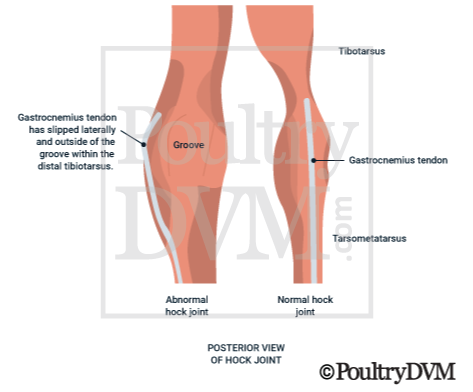Veterinary advice should be sought from your local veterinarian before applying any treatment or vaccine. Not sure who to use? Look up veterinarians who specialize in poultry using our directory listing. Find me a Vet

| Name | Summary | |
|---|---|---|
| Supportive care | Isolate the bird from the flock and place in a safe, comfortable, warm location (your own chicken "intensive care unit") with easy access to water and food. Limit stress. Call your veterinarian. | |
| Bandaging/Splinting | If caught early, bandaging and/or splinting the affected leg back into place may be effective in mild cases. | |
| Surgery | Required in severe or longstanding cases. | |
| Antibiotics | To help prevent secondary joint infection. | |
| Diet changes | Provide a well-balanced diet and correct any deficiencies. | |
| Brewer's yeast | 2.5 to 5.0% added to the diet | I Plavnik et al |

© 2026 PoultryDVM All Rights Reserved.